Does your home feel stuffy and hot in summer? Are your energy bills sky-high despite running the air conditioner? Your attic might be the culprit. Many homeowners miss the warning signs of bad attic airflow, leading to costly repairs and discomfort.
Poor attic ventilation affects your entire home – from making your cooling system work harder to causing water damage on your ceilings. It’s a hidden problem that worsens over time.
The good news? You can spot the warning signs before major issues develop. This guide shares 7 clear indicators that your attic needs better airflow. By learning these signs, you’ll protect your home and possibly save thousands in future repairs.
Let’s look at what your attic is trying to tell you
The Importance of Proper Attic Ventilation
Good attic airflow is crucial for maintaining your home’s optimal condition. When air moves freely through your attic, it stops heat from building up during summer months. This helps your home stay cooler and cuts down on cooling costs. In winter, proper airflow helps push out warm, moist air that can cause water to collect in your attic space.
- Proper ventilation can extend your roof’s life by preventing the shingles from overheating and cracking.
- It helps maintain a balanced temperature throughout your house, reducing hot and cold spots.
- Good airflow prevents ice dams in winter, which can damage gutters and cause water to back up under shingles.
Without good airflow, moisture builds up in your attic. This can rot wood beams, warp floors, and create spots for mold to grow. Over time, these issues may lead to costly fixes and health concerns for people living in the home.
A well-designed ventilation system works like the lungs of your house.
It has two main parts: intake and exhaust vents. The intake vents, often found in the soffits or eaves, pull fresh air into the attic from outside. The exhaust vents, usually on the roof or gables, let hot, moist air escape.
This flow creates a cycle where fresh air constantly moves through your attic, keeping the space dry and at the right temperature.
7 Signs of Poor Attic Ventilation
Watch for these warning signs that your attic needs better airflow. Catching these problems early can save you money and stress.
1. Excessive Heat in the Attic
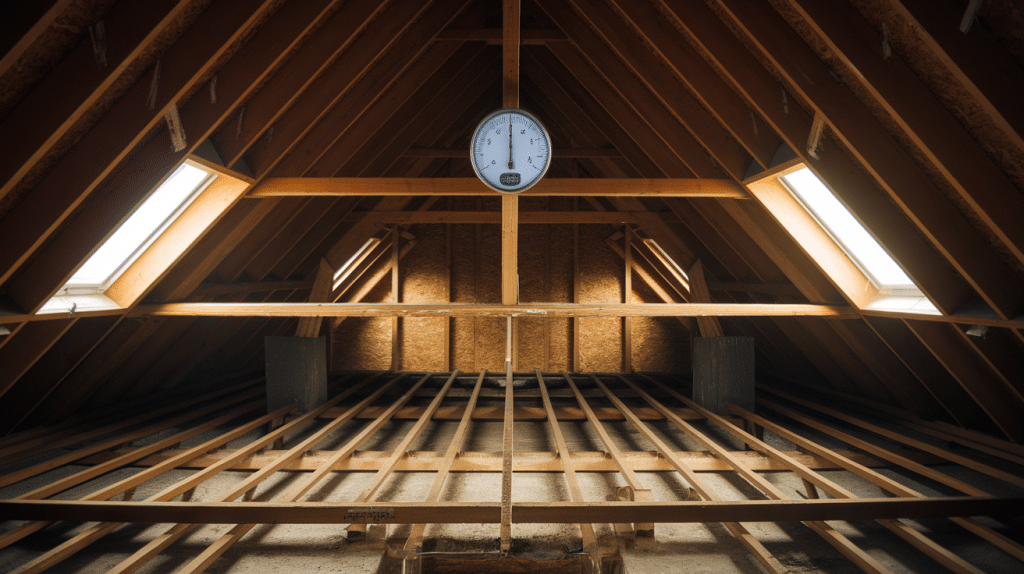
A hot attic is a clear sign that air isn’t moving out as it should. When summer heat gets trapped, it pushes down into your living spaces and forces your cooling system to work harder.
- The temperature in a well-ventilated attic should be no more than 10-15°F warmer than outside
- Touching attic floors that feel very hot even in mild weather indicates poor airflow
- Higher utility bills during summer months often point to ventilation issues
- Roof shingles might age faster, looking curled or worn before their time
Note: Check your attic temperature on a warm day. If it feels like a sauna, you likely need more ventilation.
2. Ice Dams During Winter
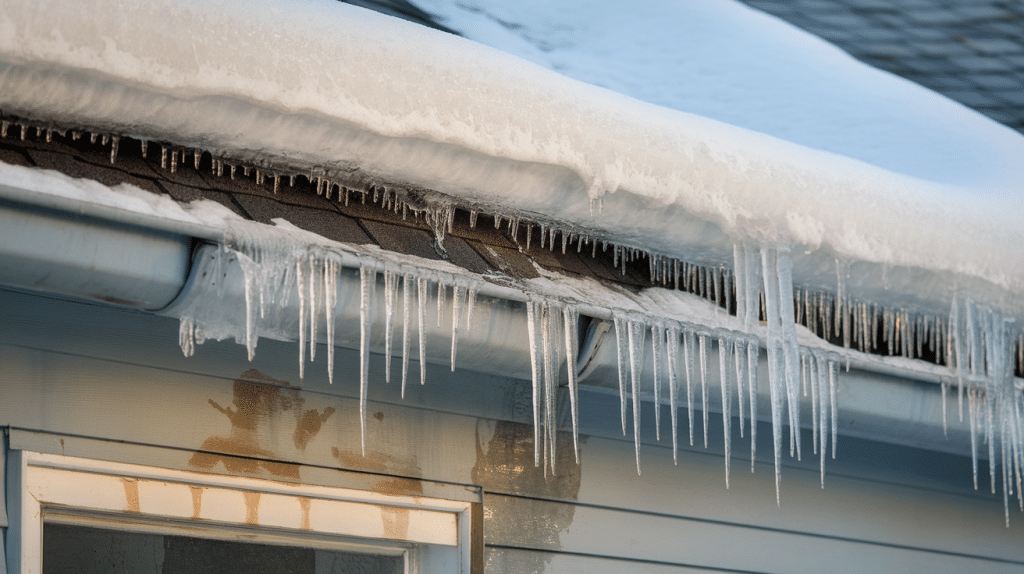
Ice dams form when warm attic air melts snow on your roof, which then refreezes at the colder edges.
- Look for icicles hanging from your gutters or roof edges during freezing weather
- Water stains on exterior walls or near windows might indicate ice dam leakage
- Bent or damaged gutters after winter could be from ice dam weight
- Wet insulation in the attic near the roof edges signals water backing up from ice dams
Note: Ice dams aren’t just winter nuisances—they can cause serious water damage to your home’s interior.
3. Mold and Mildew Growth
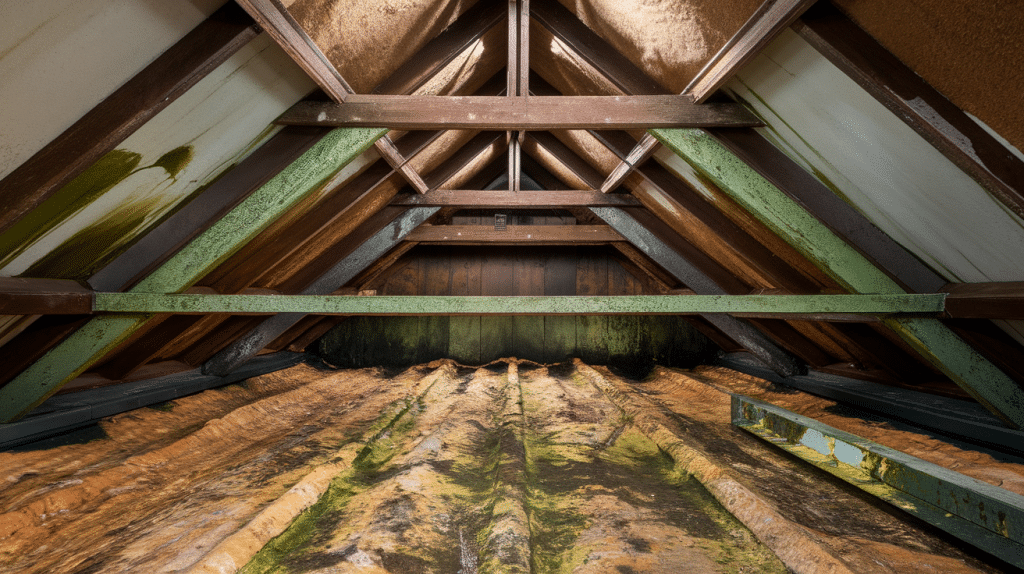
Without proper airflow, moisture builds up and creates perfect conditions for mold and mildew to thrive.
- Black or green spots on attic wood surfaces indicate mold growth
- Damp-feeling insulation that’s lost its fluffiness may harbor hidden mold
- Visible water stains on wooden beams or rafters show moisture problems
- Allergic reactions or breathing problems that worsen at home could link to attic mold
Note: Mold doesn’t just damage your home—it can harm your family’s health too.
4. Rusted Nails or Metal Components

Metal parts in your attic shouldn’t rust if the space is properly dry and ventilated.
- Rusty nail tips poking through roof sheathing are telltale moisture indicators
- Corroded metal fasteners or truss plates suggest ongoing humidity issues
- Discolored metal vent pipes or flashing point to condensation problems
- Rust spots on metal roof vents show that moisture is hanging around too long
Note: Rust doesn’t form without moisture—so any sign of it means you have a humidity problem.
5. Warped or Damaged Roof Decking
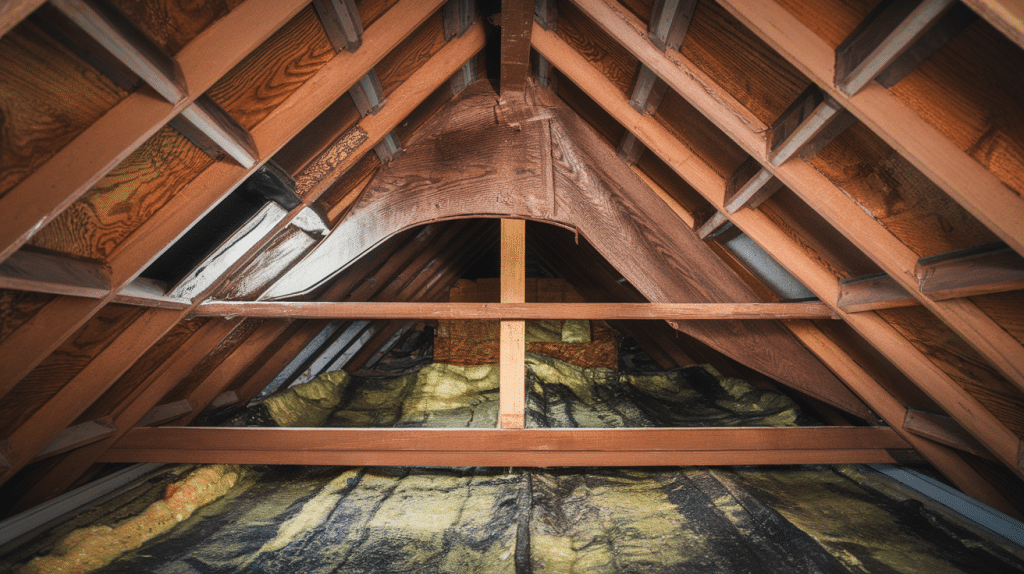
The wooden boards that support your roof can warp or rot when exposed to too much moisture.
- Visibly sagging areas on your roof may indicate decay below
- Soft spots when you press on attic ceiling or roof deck show wood breakdown
- Visible light coming through roof boards where it shouldn’t be hints at warping
- Cracked or split wooden beams suggest long-term moisture exposure
Note: Structural damage from poor ventilation can be expensive to fix and might compromise your home’s safety.
"As highlighted in How Poor Ventilation Can Warp Your Roof, excessive attic heat can cause shingles to curl and warp, leading to potential roof damage."
6. Peeling Paint or Blistering Shingles
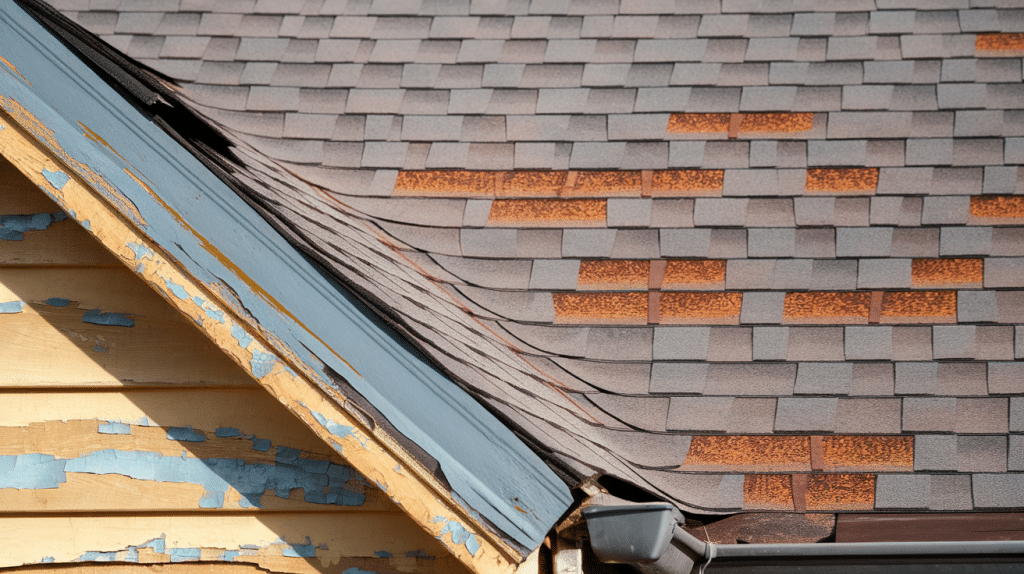
Exterior paint and roof materials suffer when attic moisture and heat can’t escape properly.
- Bubbling or peeling paint on exterior overhangs often links to attic moisture
- Shingles that curl at the edges or lose their protective granules age prematurely
- Blisters on roofing materials reveal trapped heat trying to escape
- Roof colors that look faded or uneven in spots suggest heat damage
Note: Your roof and exterior paint job will last years longer with proper attic ventilation.
7. Musty Odors Indoors
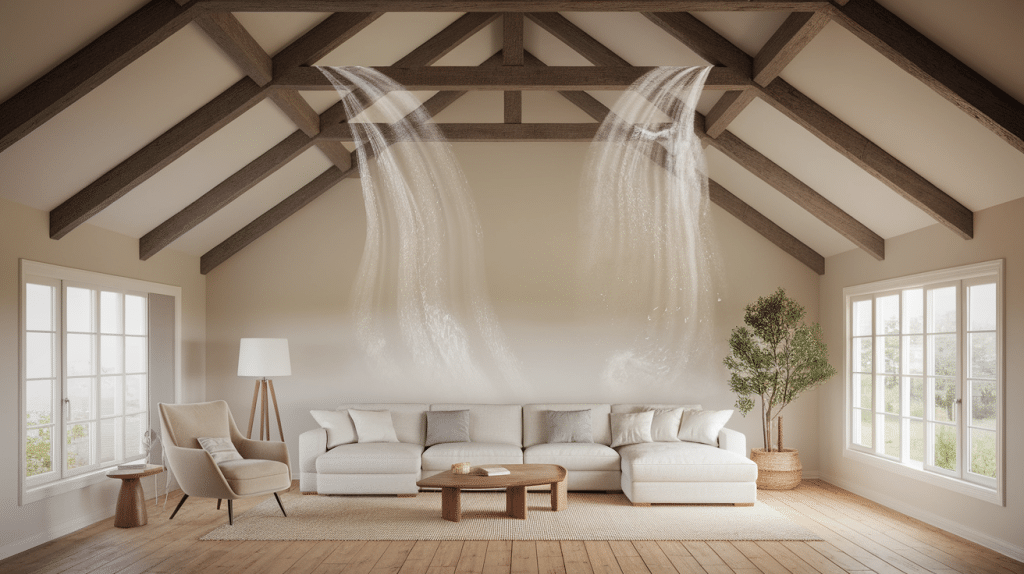
Bad smells that you can’t pinpoint might be coming from stagnant attic air.
- Persistent musty smells that worsen during humid weather
- Odors that become stronger when the HVAC system runs
- Smells that are more noticeable in upper-floor rooms
- Musty scents that return even after cleaning
Note: If you can smell your attic in your living space, you have both an air quality issue and a ventilation problem.
Solutions for Poor Attic Ventilation
- Add ridge and soffit vents for a complete system that allows fresh air to enter at the roof eaves and exit at the peak, creating natural airflow through your attic without using power.
- Install attic fans or powered vents to pull hot air out faster during summer months, which works well for homes in very hot areas or with complex roof designs that limit natural airflow.
- Clear clogged vents and remove blockages from existing ventilation openings, checking for bird nests, insulation, dust, or leaves that might be stopping air from moving freely through your attic space.
- Add gable vents or roof vents if your current setup doesn’t provide enough air movement, which can supplement your existing system without major roof modifications.
- Seal interior air leaks and add insulation properly to stop warm, moist household air from entering your attic in the first place, which reduces the load on your ventilation system and makes it work better.
Maintenance Tips to Prevent Future Problems
1. Seasonal Inspection Schedule: Check your attic ventilation system at least twice yearly—in late fall before winter and late spring before summer—to catch potential issues before extreme weather makes them worse.
2. Vent Cleaning Protocol: Remove dust, debris, and insect nests from all intake and exhaust vents every 6-12 months using a soft brush and vacuum, ensuring nothing blocks the free flow of air.
3. Insulation Assessment: Examine attic insulation annually for signs of moisture, compression, or shifting that might block soffit vents, replacing any wet or damaged sections immediately.
4. Humidity Monitoring: Place a hygrometer in your attic to track moisture levels, aiming to maintain relative humidity between 30-50% to prevent conditions that lead to mold growth and wood decay.
5. Professional Roof Evaluation: Schedule a professional roof and attic inspection every 3-5 years, or after major storms, to have trained eyes identify subtle ventilation problems that homeowners might miss.
Conclusion
Your attic plays a key role in your home’s health and comfort. Poor airflow can lead to bigger issues that affect your wallet and well-being. By spotting the signs early, you can fix small problems before they grow.
Remember that good attic ventilation works year-round to keep your home dry, comfortable, and energy-efficient. The signs we’ve covered—from excess heat to musty smells—are your home’s way of signaling that something needs attention.
Take time this season to check your attic. A small investment in proper ventilation today can prevent costly repairs tomorrow. If you’re not sure where to start, don’t hesitate to call a qualified roofer or home inspector for a professional assessment.
Your home will thank you with many years of good service.


